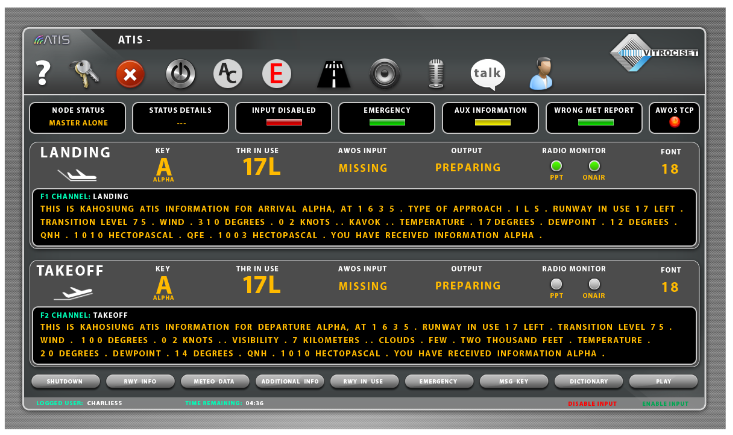Home / Products / Navigation / ATIS
ATIS
ATIS (Automatic Terminal Area Information Service) is a system designed to operate as part of the Air Traffic Control equipment used at airports. The system uses dedicated audio and digital channels (D-ATIS) to send information on the weather situation and the state of associated airport equipment.

The information distribution service is provided either automatically
by processing local weather forecast data received from the local
weather system or the AFTN/AMHS network, or manually, with additional
information sent by an operator. This processing translates the
messages into sequences of words, which are then transmitted in text
and audio on the configured output channels (ARINC/SITA VHF or VOR
network).
The system uses a high-tech TextToSpeech engine to convert any text
into audio and also to allow the customization of pronunciation when
inadequate or incorrect (e.g. in the case of place names).
ATIS has been developed according to the ICAO and WMO standard and the
ARINC 618, 620, 623 and ED-89A standards as regards the data-link.
The main operational features of the ATIS system are:
• real-time weather data acquisition from the local weather system or
AFTN/AMHS network
• possible manual acquisition of weather data, of auxiliary information
and any emergencies from operator workstations
• processing of acquired data
• speech synthesis of current data
• distribution of the ATIS bulletin on audio and digital channels
• management of the default phraseology and vocabulary.
The ATIS system is based on very reliable hardware and software,
thanks to its redundant node architecture. This cross-platform system
can also be accessed via the web, and is integrated into the Vitrociset
IANS (Integrated Air Navigation System) platform. It is compact,
modular and easy to maintain. It is also extremely flexible so can adapt
to any updates to the regulations.
ATIS ensures full compliance with technical and functional
user requirements and operational needs, a high level of reliability of
the data transmitted, and a clear picture of the state of the system
that enables the operator to find a quick solution in the event of
faults.
An organization, no matter how well designed, is only as good as the people who live and work in it.


